Easton Press Nathaniel Hawthorne books
The Scarlet Letter - 100 Greatest Books Ever Written - 1975The Blithedale Romance
Twice Told Tales - 1966
The House of Seven Gables - 1979
A Wonder Book for Girls and Boys and Tanglewood Tales - The Collector's Library of Famous Editions - 2001
Franklin Library Nathaniel Hawthorne books
The Scarlet Letter - 100 Greatest Books of All Time - 1978
Selected Tales of Nathaniel Hawthorne - 100 Greatest Masterpieces of American Literature - 1982
35 Stories by Nathaniel Hawthorne - Collected Stories of the World's Greatest Writers - 1978
The House of Seven Gables - World's Best Loved Books - 1982
Tales by Nathaniel Hawthorne - World's Best Loved Books - 1984
The Scarlet Letter - World's Best Loved Books - 1985
Nathaniel Hawthorne biography
Nathaniel Hawthorne, born on July 4, 1804, in Salem, Massachusetts, was a renowned American novelist and short story writer, best known for his works that explored the complexities of human nature and the dark corners of the human soul. His writing style, often characterized by symbolism and allegory, made a lasting impact on American literature. Hawthorne's early life was marked by tragedy. His father died when he was only four years old, leaving his mother to raise him and his two sisters. This experience of loss and the Hawthorne family's history of involvement in the Salem witch trials would later influence his writing, particularly in his masterpiece, The Scarlet Letter.
After graduating from Bowdoin College in 1825, Hawthorne struggled to establish himself as a writer. He spent several years working various jobs, including as a customs officer, which provided him with material for his later works. In 1837, he published his first novel, Fanshawe, but it did not gain much attention. However, his fortunes changed with the publication of Twice-Told Tales in 1837, a collection of short stories that showcased his skill in exploring the psychological and moral dimensions of his characters.
In 1841, Hawthorne joined the transcendentalist movement, associating with figures like Ralph Waldo Emerson and Henry David Thoreau. Despite sharing some intellectual ground with the transcendentalists, Hawthorne maintained his distinctive style and often critiqued their utopian ideals in his works.
Hawthorne's most famous work, The Scarlet Letter, was published in 1850. This novel, set in 17th-century Puritan Massachusetts, delves into the consequences of sin, guilt, and societal judgment. The character of Hester Prynne, branded with the scarlet letter 'A' for adultery, became an enduring symbol of the complexities of human morality. Other notable works by Hawthorne include The House of the Seven Gables (1851), a novel exploring the effects of a curse on a New England family, and The Marble Faun (1860), a romance set in Italy. Throughout his career, Hawthorne's writing continued to explore the darker aspects of human nature and the consequences of moral transgressions.
Nathaniel Hawthorne passed away on May 19, 1864, leaving behind a rich literary legacy that has continued to captivate readers with its exploration of the human psyche and moral dilemmas. His contributions to American literature have solidified him as one of the key figures of the 19th-century literary landscape.
The Scarlet Letter
Set in 17th-century Puritan Boston, Massachusetts, during the years 1642 to 1649, it tells the story of Hester Prynne, who conceives a daughter through an affair and will not reveal her lover’s identity. The scarlet letter A (for adultery) she has to wear on her clothes, along with her public shaming, is her punishment for her sin and her secrecy. She struggles to create a new life of repentance and dignity. Throughout the book, Hawthorne explores themes of legalism, sin, and guilt.
The red letter A on her dress marks young mother Hester Prynne among her Puritan neighbors, who demand to know who fathered her child. Rumors swirl, but the shunned and shamed Hester keeps her secret and his for years, until a guilt-ridden confession reveals the truth, with unexpected consequences.
Set in seventeenth-century Massachusetts, Hawthorne’s masterwork was originally subtitled “a romance,” though its themes include the limits of law, the power of religion, and the nature of sin. Equal parts tragic love story and social commentary, The Scarlet Letter brings to life the undying human need to keep secrets.
The Scarlet Letter (1850) sets its heroine, Hester Prynne, into the shaping early moments of American history. The mother of an illegitimate child, Hester is compelled both by her Puritan community and her awareness of her own moral autonomy to wear a scarlet letter "A", a symbol of her adultery, upon her clothes. Her child is seen as the evidence of her sin and her refusal to name her lover taken as a token of her moral perversity. However, Hester emerges from the novel a woman whose integrity is intact. Born from the heart of New England, The Scarlet Letter is as much about individual choice and moral responsibilities as about the birth pangs of a nation.
Hailed by Henry James as "the finest piece of imaginative writing yet put forth in the country," Nathaniel Hawthorne's The Scarlet Letter reaches to our nation's historical and moral roots for the material of great tragedy. Set in an early New England colony, the novel shows the terrible impact a single, passionate act has on the lives of three members of the community: the defiant Hester Prynne; the fiery, tortured Reverend Dimmesdale; and the obsessed, vengeful Chillingworth.
The House of Seven Gables
The House of the Seven Gables is a Gothic novel written beginning in mid-1850 by American author Nathaniel Hawthorne and published in April 1851 by Ticknor and Fields of Boston. The novel follows a New England family and their ancestral home.
The sins of one generation are visited upon another in a haunted New England mansion until the arrival of a young woman from the country breathes new air into mouldering lives and rooms. Written shortly after The Scarlet Letter, The House of the Seven Gables re-addresses the theme of human guilt in a style remarkable in both its descriptive virtuosity and its truly modern mix of fantasy and realism.
In a sleepy little New England village stands a dark, weather-beaten, many-gabled house. This brooding mansion is haunted by a centuries-old curse that casts the shadow of ancestral sin upon the last four members of the distinctive old Pyncheon family. Mysterious deaths threaten the living, while musty documents nestle behind hidden panels carrying the secret of the family's salvation - or its downfall.
In the mid 1800s, Pyncheon is still a revered namesake in Salem, with the gloomy Pyncheon mansion serving as a stark reminder of the family’s upper class history. However, the house unique for its seven gables has a dark and deadly past. Its current occupant, the older and unmarried Hepzibah Pyncheon, is all but destitute and unwilling to accept any assistance from her wealthy but unrelenting cousin, Judge Jaffrey Pyncheon. To support her brother Clifford, who is about to leave prison after serving 30 years for murder, Hepzibah opens a shop in a side room. Phoebe, a distant cousin from the country, moves into the mansion to help run the shop. Soon a romance blossoms between Phoebe and Holgrave, an attic lodger who is writing the Pyncheon family history.
The setting for the book was inspired by a gabled house in Salem belonging to Hawthorne's cousin Susanna Ingersoll and by ancestors of Hawthorne who had played a part in the Salem Witch Trials of 1692. The book was well received upon publication and later had a strong influence on the work of H. P. Lovecraft. The House of the Seven Gables has been adapted several times to film and television.
The novel was an inspiration for horror fiction writer H. P. Lovecraft, who called it "New England's greatest contribution to weird literature" in his essay "Supernatural Horror in Literature". Seven Gables likely influenced Lovecraft's short stories "The Picture in the House", "The Shunned House" and novella The Case of Charles Dexter Ward.
Twice Told Tales
The author of such short-fiction masterpieces as Young Goodman Brown and The Minister's Black Veil, Nathaniel Hawthorne is regarded as one of the most significant American writers of the nineteenth century. This volume collects many of his most famous short works and is a fitting compendium of his literary achievements for newcomers or longtime Hawthorne fans alike.
Dr. Heidegger invites four friends to witness an experiment. As the impoverished merchant Mr. Medbourne, the gout-ridden sinner Colonel Killigrew, the ruined politician Mr. Gascoigne, and the aged widow Wycherly watch, Heidegger places an old rose in a vase filled with water drawn from the Fountain of Youth. When the rose blooms again, the elderly guests clamor to drink the water and relive their early years more soberly than they did the first time around. But wisdom rarely graces the young, and Heidegger’s test subjects soon discover that miracles won’t prevent them from behaving like fools all over again.
“Dr. Heidegger’s Experiment” is just one of the classic short stories collected in this indispensable volume. From “The Minister’s Black Veil” to “The Great Carbuncle” to “The May-Pole of Merry Mount,” Twice-Told Tales shines a brilliant light on the mysteries of the human heart. Its profound influence on American literature is a testament to the scope of Nathaniel Hawthorne’s vision and the genius of his craft.
The Blithedale Romance
The Blithedale Romance , considered one of Hawthorne's major novels, explores the limitations of human nature set against an experiment in communal living. From mesmerism to illicit love, The Blithedale Romance represents one of Hawthorne's best and most sharply etched works, one that Henry James called his "brightest" and "liveliest" novel, and that Roy Male, acclaimed Americanist scholar, said is "one of the most underrated works in American fiction."
Abjuring the city for a pastoral life, a group of utopians set out to reform a dissipated America. But the group is a powerful mix of competing ambitions and its idealism finds little satisfaction in farm work. Instead, of changing the world, the members of the Blithedale community individually pursue egotistical paths that ultimately lead to tragedy. Hawthorne's tale both mourns and satirizes a rural idyll not unlike that of nineteenth-century America at large.
A superb depiction of a utopian community that cannot survive the individual passions of its members. In language that is suggestive and often erotic, Nathaniel Hawthorne tells a tale of failed possibilities and multiple personal betrayals as he explores the contrasts between what his characters espouse and what they actually experience in an 'ideal' community. A theme of unrealized sexual possibilities serves as a counterpoint to the other failures at class and sex distinctions are not eradicated, and communal work on the farm proves personally unrewarding and economically disastrous. Based in part on Hawthorne's own experiences at Brook Farm, an experimental socialist community, The Blithedale Romance is especially timely in light of renewed interest in self-sufficient and other cooperative societies.
A Wonder Book for Girls and Boys
Six legends of Greek mythology, retold for children by Nathaniel Hawthorne. Included are The Gorgon’s Head, The Golden Touch, The Paradise of Children, The Three Golden Apples, The Miraculous Pitcher, and The Chimaera. In 1838, Hawthorne suggested to Henry Wadsworth Longfellow that they collaborate on a story for children based on the legend of the Pandora’s Box, but this never materialized. He wrote A Wonder Book between April and July 1851, adapting six legends most freely from Charles Anton’s A Classical Dictionary (1842). He set out deliberately to “modernize” the stories, freeing them from what he called “cold moonshine” and using a romantic, readable style that was criticized by adults but proved universally popular with children.
Tanglewood Tales
Sequel to A Wonder Book for Girls and Boys by master storyteller Nathaniel Hawthorne. Hawthorne wrote these stories for children based on Greek myth and legend. They are incomparable re-tellings of themes which the Greek dramatists used in creating their immortal plays and literature. Contents: The Gorgon's Head; The Golden Touch; The Paradise of Children; The Three Golden Apples; The Miraculous Pitcher; The Chimaera; The Wayside; The Minotaur; The Pygmies; The Dragon's Teeth; Circe's Palace; The Pomegranate Seeds; and The Golden Fleece.Hawthorne wrote introduction, titled "The Wayside," referring to The Wayside in Concord, where he lived from 1852 until his death. In the introduction, Hawthorne writes about a visit from his young friend Eustace Bright, who requested a sequel to A Wonder-Book, which impelled him to write the Tales. Although Hawthorne informs us in the introduction that these stories were also later retold by Cousin Eustace, the frame stories of A Wonder-Book have been abandoned. Hawthorne wrote the first book while renting a small cottage in the Berkshires, a vacation area for industrialists during the Gilded Age. The owner of the cottage, a railroad baron, renamed the cottage "Tanglewood" in honor of the book written there. Later, a nearby mansion was renamed Tanglewood, where outdoor classical concerts were held, which became a Berkshire summer tradition. Ironically, Hawthorne hated living in the Berkshires. The Tanglewood neighborhood of Houston was named after the book. The book was a favorite of Mary Catherine Farrington, the daughter of Tanglewood developer William Farrington. It reportedly inspired the name of the thickly wooded Tanglewood Island in the state of Washington.
The reader joins Theseus as he battles to escape the labyrinth and the clutches of the fearsome Minotaur. We accompany Jason and his Argonauts on their perilous quest for the Golden Fleece. Hawthorne also recounts Cadmus’ encounter with the terrifying dragons whose teeth, once planted, sprout entire armies. These brilliant stories, among many others, are the adventures that lie in wait in Tanglewood Tales. Hawthorne’s writing remains fresh and his stories are still perfect for all inquisitive young readers.
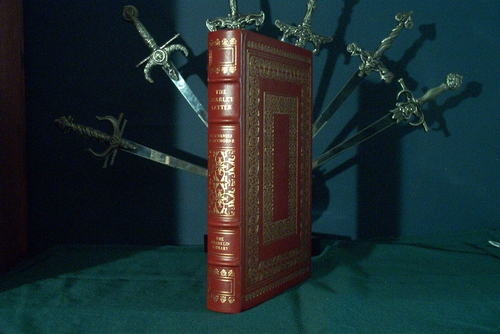
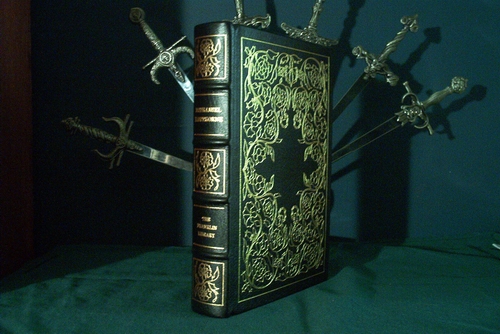
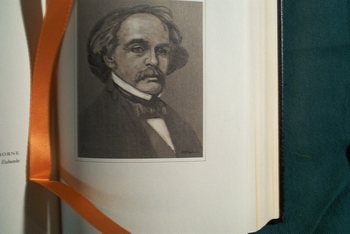
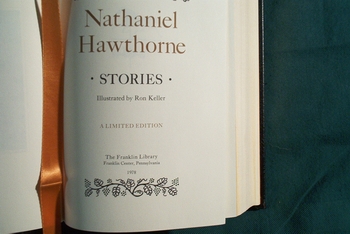

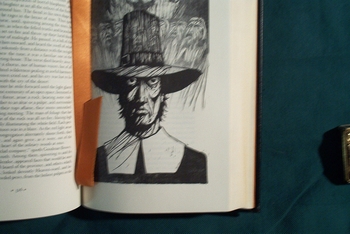
Comments
Post a Comment
Share your best book review and recommendation